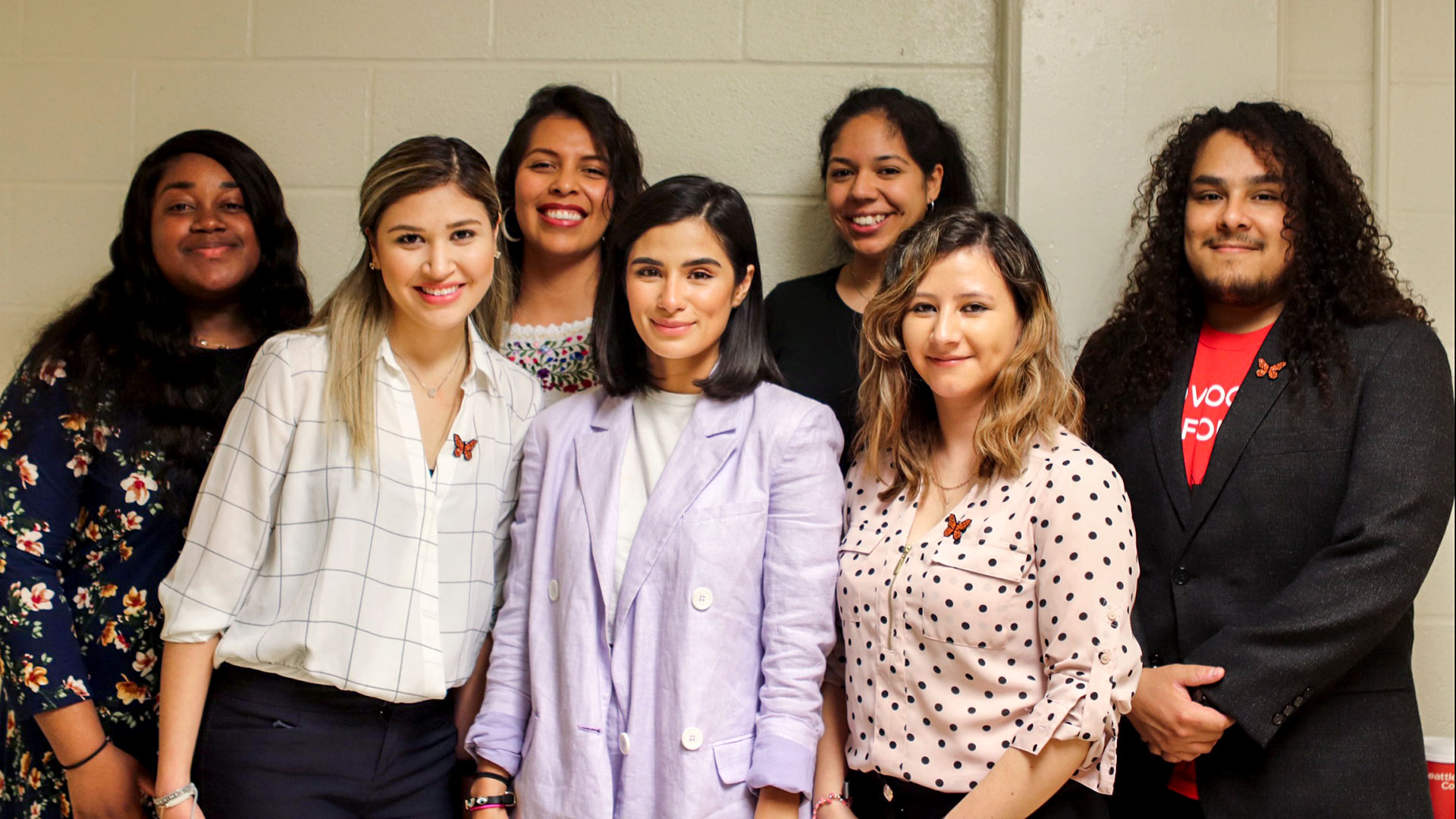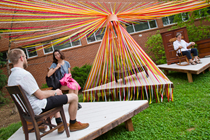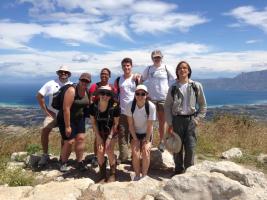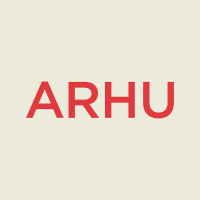Known for her parts on “Orange Is the New Black” and “Jane the Virgin,” actress Diane Guerrero took the stage at the Hoff Theater yesterday to discuss a different role in her life: immigration reform activist, and daughter and sister of deported immigrants.
Part of the university’s third annual Social Justice Day, sponsored by the College of Arts and Humanities, College of Education and A. James Clark School of Engineering, Guerrero delivered the day’s keynote address, focusing on her family’s story, in keeping with UMD’s yearlong theme of the Year of Immigration.
The day of programming also included an awards reception, mini TED-style talks and the College of Behavioral and Social Sciences-organized “Immigrant Stories” panel, moderated by UMD’s Anwar Sadat Professor for Peace and Development Shibley Telhami. It featured UMD President Wallace D. Loh; New School Professor Nina Khrushcheva, great-granddaughter of Nikita Khrushchev; and former U.S. Undersecretary of State for Civilian Security, Democracy and Human Rights Maria Otero ’72 sharing their experiences.
Guerrero answered questions from members of UndocuTerps, the university’s group for undocumented students, about the experience of her parents and brother being deported to Colombia when she was 14 years old, an event she chronicled in her book, “In the Country We Love: My Family Divided.”
“Many times I wanted to give up and say, ‘No, this is not my life, I will not accept this as my life,’” she said. “The minute that I decided to own that truth, to say, ‘Yes, I was a child and product of separation of a family ... and there’s no shame in that,' that was the minute I started growing.”
Other topics Guerrero addressed:
On what she hopes to achieve: What does Guerrero hope to see when it comes to immigration policy? “I’d like to see a path to citizenship,” she said. “I’d like to see our visa system updated. I’d like to see immigration reform. I’d like to see more solutions, and I’d like to see the conversation continued … I am someone who has experienced the separation of family and what that does to the mind, body and soul, and it’s horrific.”
On community: Guerrero emphasized the importance of sharing one’s life experiences with others who have similar stories. “What happens when you share common experiences with people who are going through the same thing is that you go to sleep and you say, ‘Wow, I’m not alone.’”
On intersectionality: Recognizing the interconnectedness of people’s backgrounds and social issues is central to Guerrero. “I cannot care about one issue without caring about another,” she said. “I cannot care about immigrants and immigrants’ rights if I don’t care about women, and vice versa. I can’t care about women’s rights if I don’t care about racial equality.”
On seeing her parents in prison as a teen: “I didn’t know my parents as criminals,” she said. “Everything you’re taught as a kid is that when you go to prison, you’re a bad person …I got there and my understanding of my parents sort of shifted. ‘I don’t see my parents as bad people, but they’re here, so are they?’”
On working on shows with a social message: “Jane the Virgin” and “Orange Is the New Black” have dealt with a range of political and social issues, from the experiences of women in prison and criminal justice to immigration. “It’s a huge privilege,” said Guerrero. “At first I was like, ‘Man, I don’t want to be on a show where I’m in prison, I already saw this—I’m not going to learn anything. This is real life for me.’ But it has been a privilege to tell these stories … there’s no coincidence as to why I landed on these shows that had such a heavy message, because I had a heavy message to tell.”
On the experience of working with a primarily Latinx cast: “Jane the Virgin” is one of the few television shows to feature primarily Latinx characters, an experience Guerrero has cherished. “We weren’t running away from our culture and who we were and who we are, and we were also not making fun of it,” she said. “We celebrated it on ‘Jane the Virgin’ and I found that helped me understand and love myself just a little bit more.”
By Sala Levin ’10













